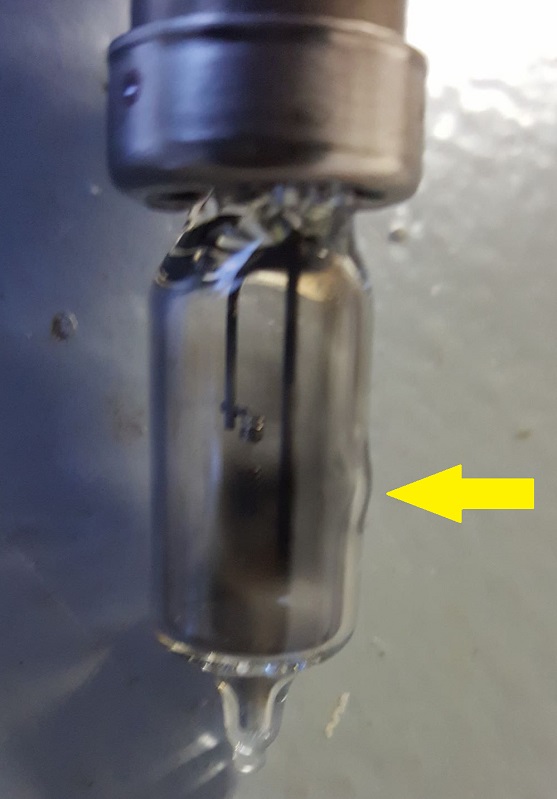Alaric Darconville
Flashlight Enthusiast
My friend sent me this pic of a burned-out Philips HIR1 from his RX300.

Interestingly, the top of it (that is, what was the top of the envelope when installed in the lamp, obviously this is rotated) was blistering. The other bulb (which was removed to become the spare, replacing the HB3 previously slated as the spare) was fine.
(Note: Bulb mishandling was not involved (envelope never touched but for wiping it (and any other parts that go into the lamp assembly) down with isopropyl alcohol).)
Also interestingly (and annoyingly) is that one failed high beam bulb means no DRL function-- it seems the voltage is halved by running the lamps in series, not through some other means of voltage control (PWM/buck convertor/resistive load). This means my plan to have the DRL extinguish on the side the turn signal is active won't work unless I get really creative. Bummer!

Interestingly, the top of it (that is, what was the top of the envelope when installed in the lamp, obviously this is rotated) was blistering. The other bulb (which was removed to become the spare, replacing the HB3 previously slated as the spare) was fine.
(Note: Bulb mishandling was not involved (envelope never touched but for wiping it (and any other parts that go into the lamp assembly) down with isopropyl alcohol).)
Also interestingly (and annoyingly) is that one failed high beam bulb means no DRL function-- it seems the voltage is halved by running the lamps in series, not through some other means of voltage control (PWM/buck convertor/resistive load). This means my plan to have the DRL extinguish on the side the turn signal is active won't work unless I get really creative. Bummer!

